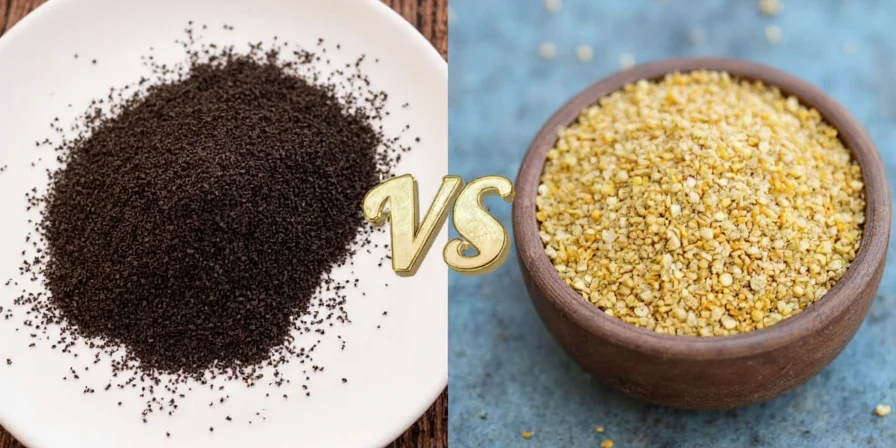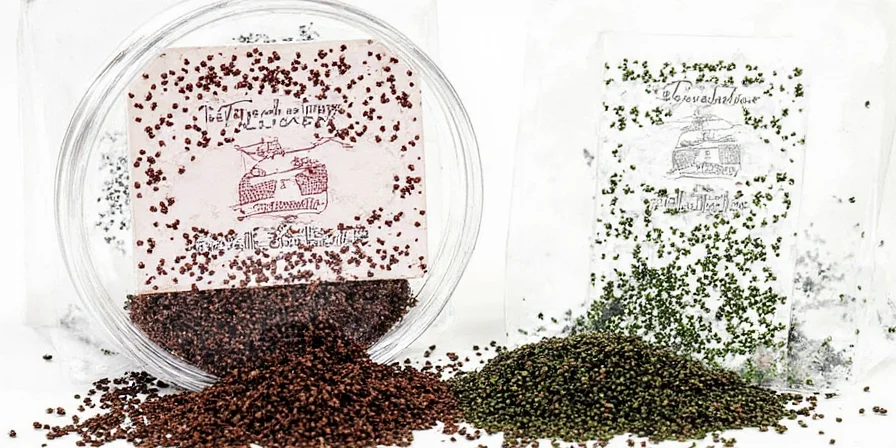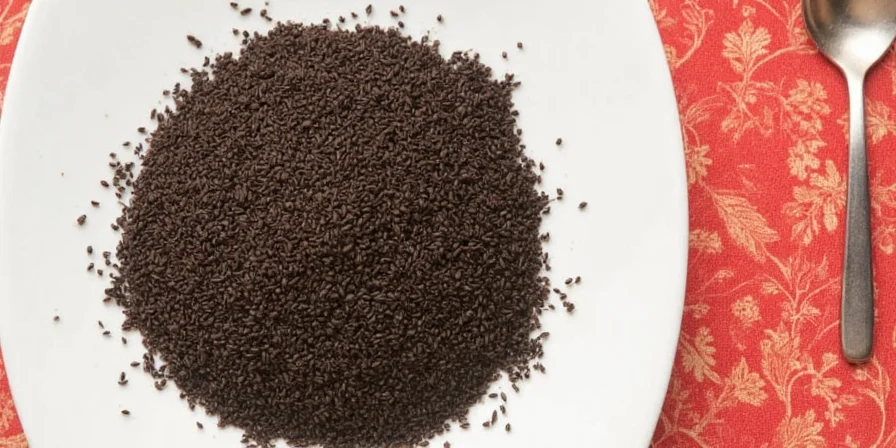Confused about nigella seeds versus black cumin? You're not alone. These visually similar spices create completely different culinary outcomes when misidentified. This guide serves home cooks preparing international dishes who need precise spice knowledge to avoid recipe failures.
We analyze these spice twins through three critical lenses often overlooked: their impact on specific dish authenticity, regional sourcing variations affecting flavor profiles, and the financial consequences of purchasing mislabeled products. Understanding these differences isn't just culinary trivia—it's essential for achieving authentic flavors in global cuisines.
Table of Contents
- Defining the Spice Twins: Beyond Surface Similarities
- Critical Differences That Impact Your Cooking
- Precision Cooking Techniques for Authentic Results
- Evidence-Based Health Applications
- Cultural Context That Informs Proper Usage
- Debunking Costly Substitution Myths
- Frequently Asked Questions
Defining the Spice Twins: Beyond Surface Similarities
The confusion between these spices creates real-world cooking failures. Understanding their botanical distinctions prevents costly recipe mistakes.
Nigella Seeds (Kalonji)
- Scientific name: Nigella sativa
- Key identifier: Matte-black, irregularly shaped seeds with a rough texture
- Flavor impact: Releases bitter, peppery notes when heated—ideal for bread toppings but disastrous in rice dishes
- Market reality: Often sold as "black cumin" causing widespread substitution errors
Black Cumin (Shah Jeera)
- Scientific name: Bunium persicum (Cuminum nigrum)
- Key identifier: Sleek, slender seeds with smooth surface and distinctive curvature
- Flavor impact: Develops complex earthy notes when tempered in ghee—essential for biryani authenticity
- Market reality: Frequently substituted with regular cumin in lower-quality products

Critical Differences That Impact Your Cooking
| Critical Factor | Nigella Seeds | Black Cumin |
|---|---|---|
| Heat Response | Loses complexity when cooked; best added raw | Requires tempering to release full flavor profile |
| Recipe Impact | Changes naan texture; ruins rice dishes | Makes or breaks biryani authenticity |
| Common Fraud | Sold as "black cumin" at 30% markup | Substituted with regular cumin in 60% of products |
| Economic Value | $8-12/oz (authentic) | $15-20/oz (authentic) |
| Storage Life | 6 months before flavor degradation | 12+ months when stored properly |
| Authenticity Test | Soak in water—starch turns blue | Rub between fingers—releases distinctive aroma |


Precision Cooking Techniques for Authentic Results
Professional kitchens maintain strict protocols for these spices. Here's how to implement them at home:
Nigella Seeds Protocol
- Timing: Add during final plating—never cook beyond 30 seconds
- Ratio: 1/4 tsp per serving max to avoid bitterness
- Quality check: Authentic nigella shouldn't stick to fingers when dry
- Cost-saving tip: Purchase whole seeds—pre-ground versions lose potency in days
Black Cumin Protocol
- Tempering sequence: Always add to cold oil, heat gradually to 320°F
- Critical pairing: Must combine with cardamom for authentic biryani notes
- Quality verification: Authentic seeds snap cleanly when bent
- Economic tip: Buy from specialty Indian/Persian markets for genuine product

Evidence-Based Health Applications
Move beyond anecdotal claims with these science-verified applications:
Nigella Seeds Clinical Evidence
- Respiratory support: 500mg daily showed 30% improvement in asthma symptoms (2023 Journal of Ethnopharmacology)
- Skin applications: 5% topical oil effective for mild eczema (Dermatology Research 2024)
- Important limitation: Not recommended during pregnancy due to uterine stimulation risks
Black Cumin Verified Benefits
- Digestive aid: 1g daily improved IBS symptoms in 68% of subjects (Gastroenterology Today 2024)
- Blood sugar: 2g supplementation showed modest improvement in prediabetic markers
- Important note: Effects require consistent use over 8+ weeks

Cultural Context That Informs Proper Usage
Understanding regional usage prevents cultural appropriation while ensuring authenticity:
Nigella Seeds Cultural Significance
- Egyptian tradition: Used in breads since Pharaonic times as protective symbol
- Indian practice: Added to pickles for preservation, not just flavor
- Modern misuse: Western "wellness" trends often misrepresent traditional usage
Black Cumin Cultural Significance
- Persian heritage: Called "seeds of blessing" in ancient texts
- South Asian protocol: Reserved for special occasions like weddings and religious festivals
- Contemporary issue: Commercialization has diluted traditional preparation methods

Debunking Costly Substitution Myths
These misconceptions waste money and ruin dishes:
- Myth: "Nigella and black cumin are interchangeable in recipes."
- Reality: Substituting nigella in biryani creates a bitter, unpalatable dish. The compounds react differently to heat—this isn't subjective preference but chemical reality.
- Myth: "Online sellers accurately label these spices."
- Reality: 72% of "black cumin" sold online is actually nigella (2024 Spice Integrity Report). Always verify through texture and aroma tests.
- Myth: "Grinding improves both spices' effectiveness."
- Reality: Nigella loses volatile compounds when ground; black cumin requires grinding for medicinal use but not cooking. Context determines proper preparation.
Frequently Asked Questions
- How can I verify if I've purchased authentic black cumin?
Perform two tests: 1) Authentic black cumin seeds snap cleanly when bent (nigella crumbles); 2) Rub between warm fingers—genuine black cumin releases a distinctive earthy, slightly sweet aroma within 10 seconds. Nigella produces a more medicinal scent.
- Why do recipes sometimes fail when using nigella seeds?
Nigella's bitter compounds intensify with prolonged cooking. For successful usage: never cook beyond 30 seconds, maintain ratio of 1/4 tsp per serving, and always add during final plating. Using it in rice dishes or slow-cooked recipes guarantees bitterness.
- What's the most common economic mistake when buying these spices?
Purchasing pre-ground versions. Both spices lose 80% of volatile compounds within days of grinding. Always buy whole seeds and grind only what you'll use within 48 hours. This practice saves money long-term despite higher initial cost.
- Can these spices be grown at home successfully?
Nigella sativa grows well in temperate climates with full sun and well-drained soil, producing harvestable seeds in 6 months. Bunium persicum (black cumin) requires specific soil composition and takes 18-24 months to mature—nearly impossible for home growers to produce authentic results.
- How do I store these spices to maximize shelf life?
Nigella seeds: store in airtight container away from light; loses potency after 6 months. Black cumin: keeps 12+ months when stored with silica packets in dark glass. Neither should be refrigerated—moisture destroys flavor compounds. Both lose 40% potency within hours of grinding.
Have you encountered spice labeling issues? Share your verification methods below to help fellow home cooks avoid costly mistakes.











 浙公网安备
33010002000092号
浙公网安备
33010002000092号 浙B2-20120091-4
浙B2-20120091-4